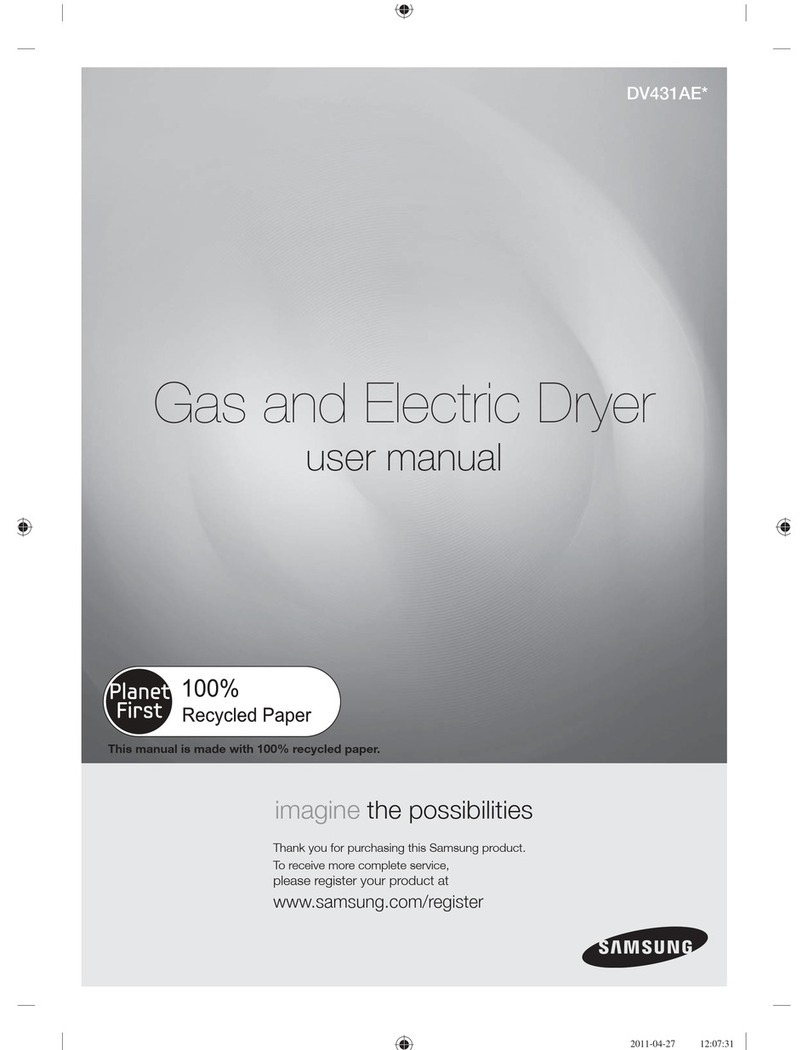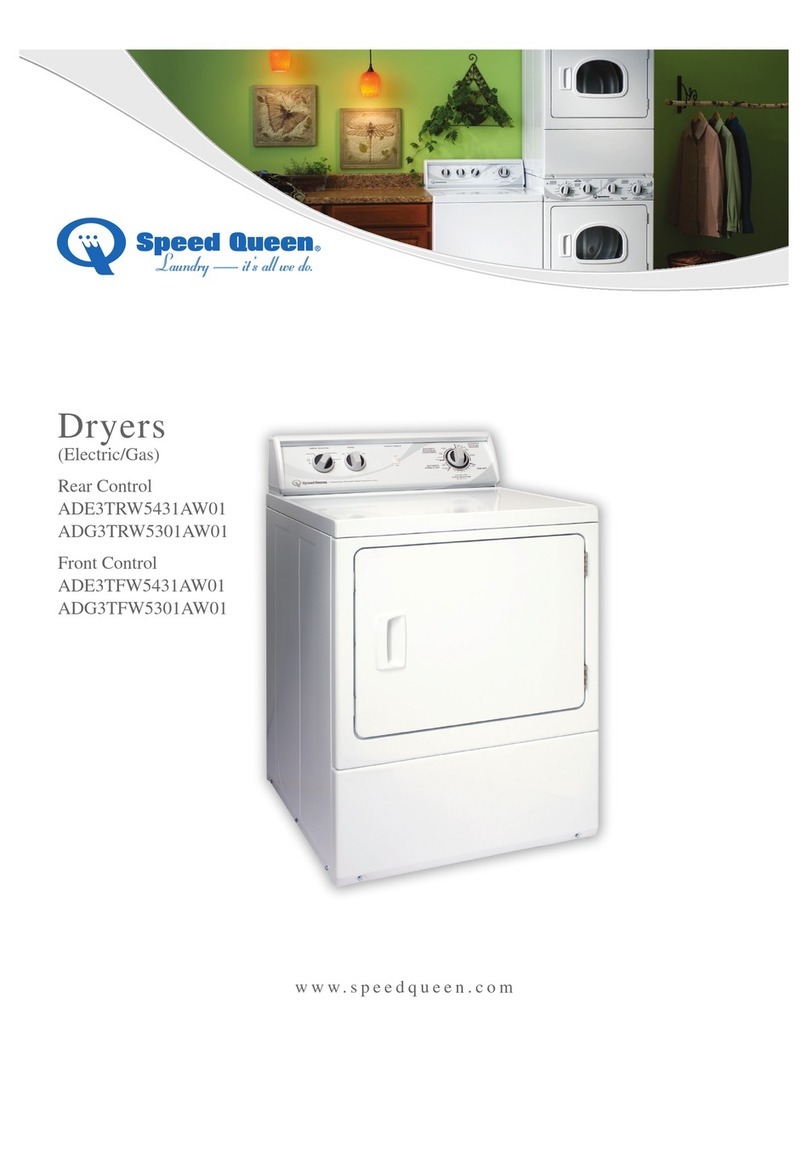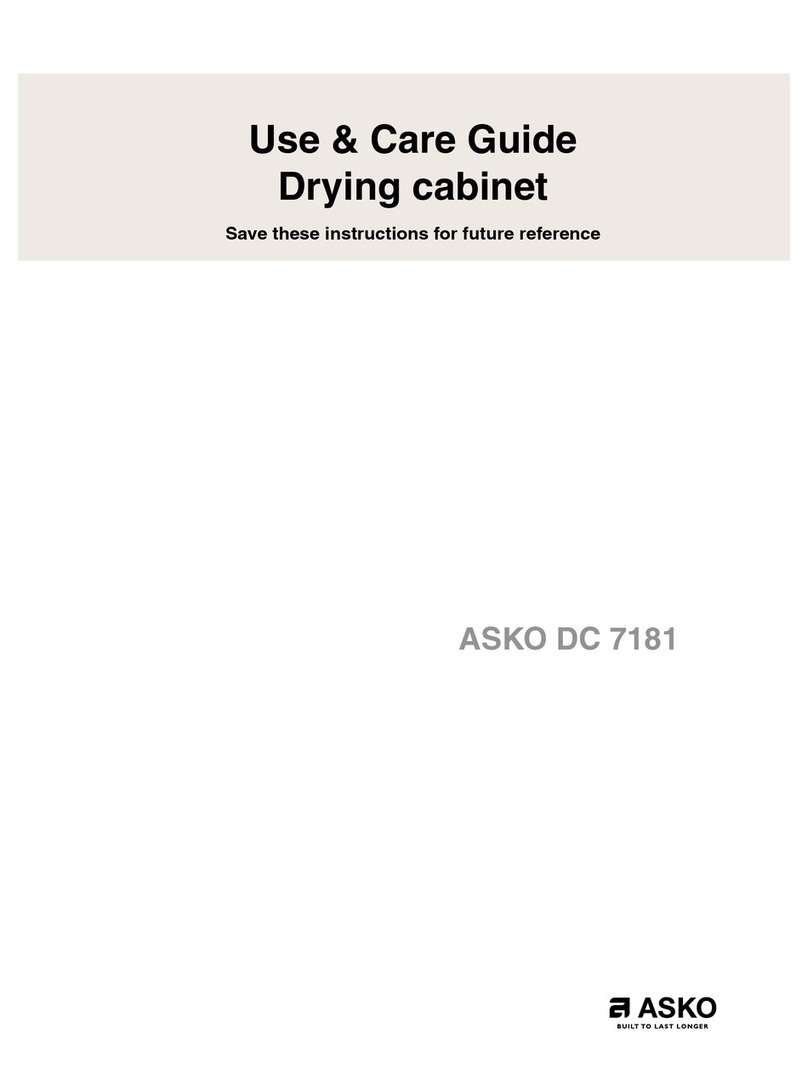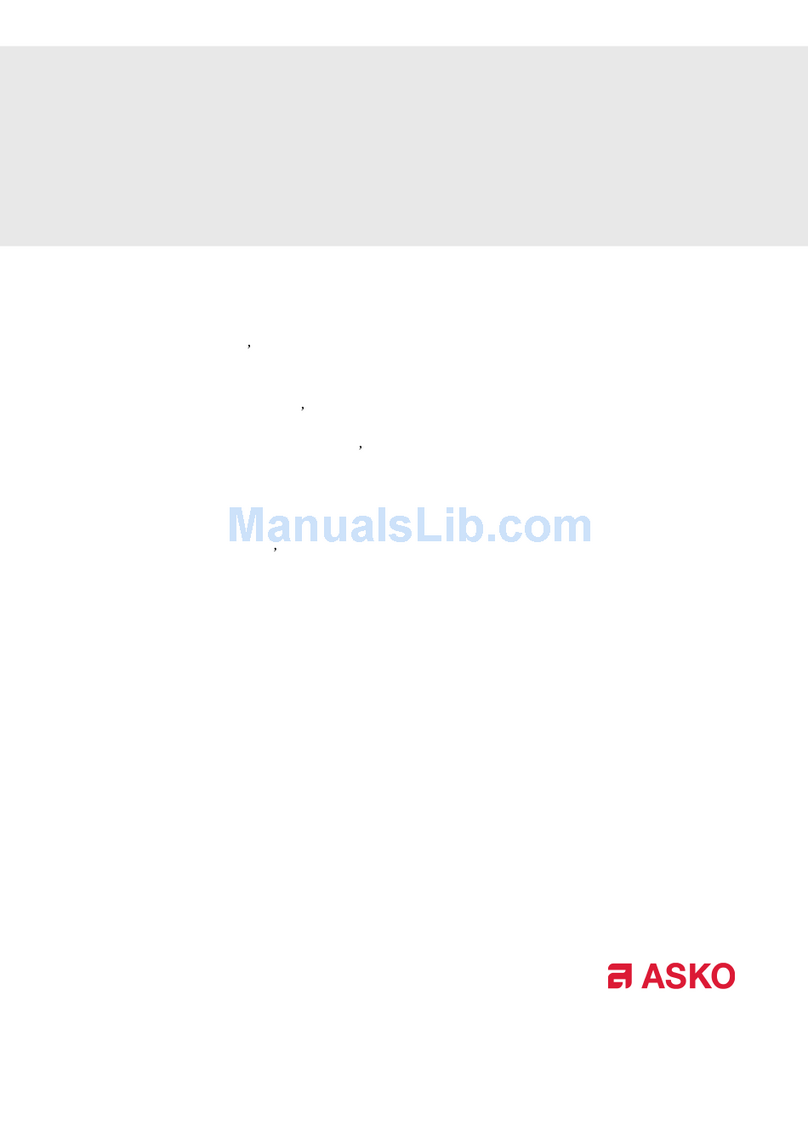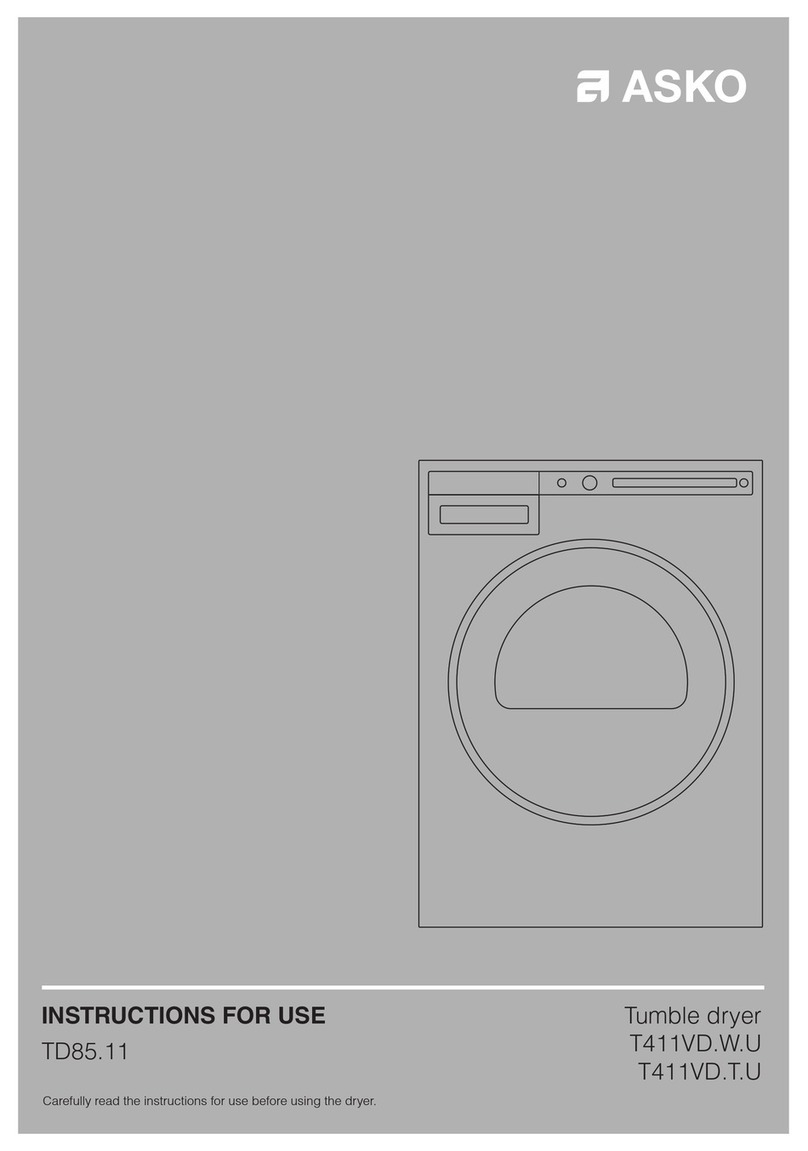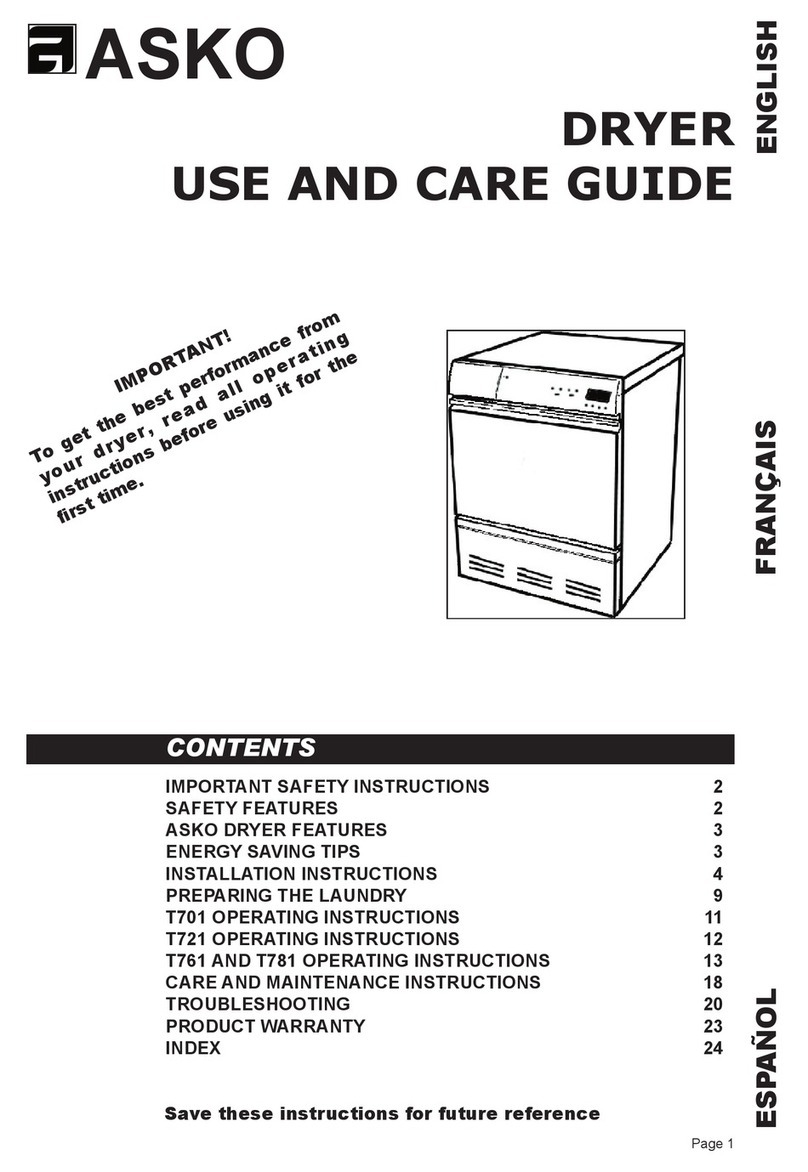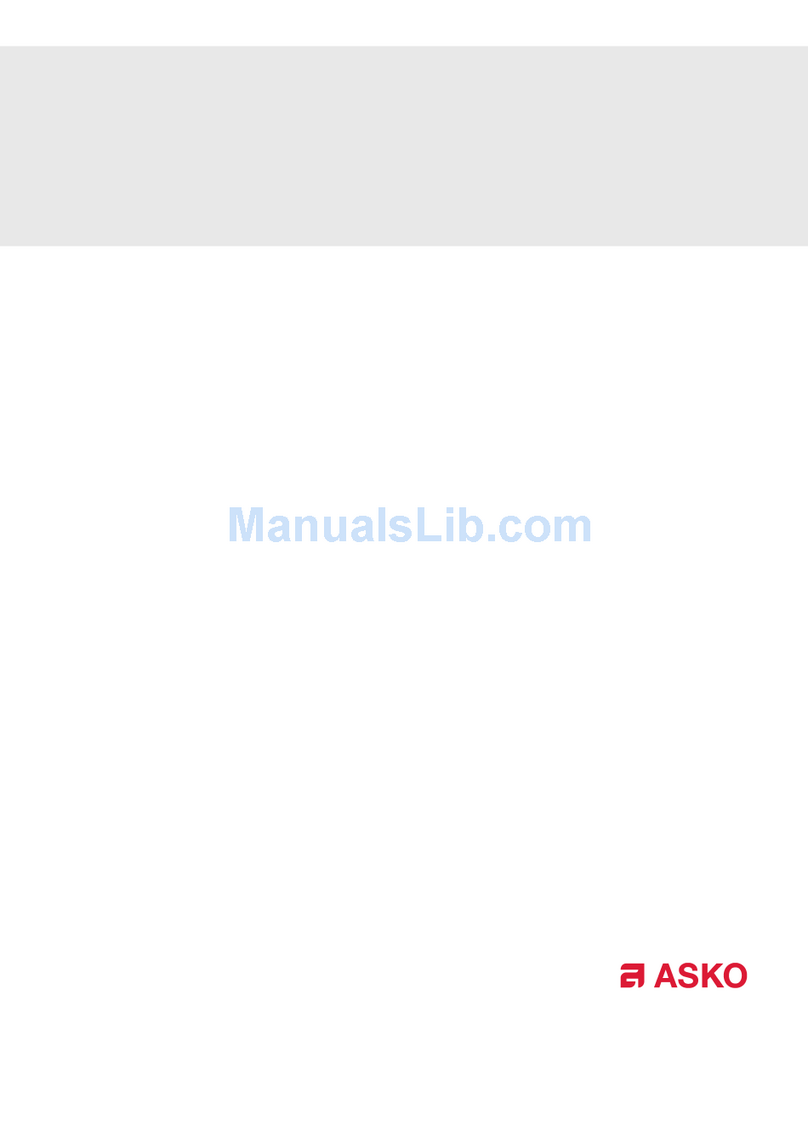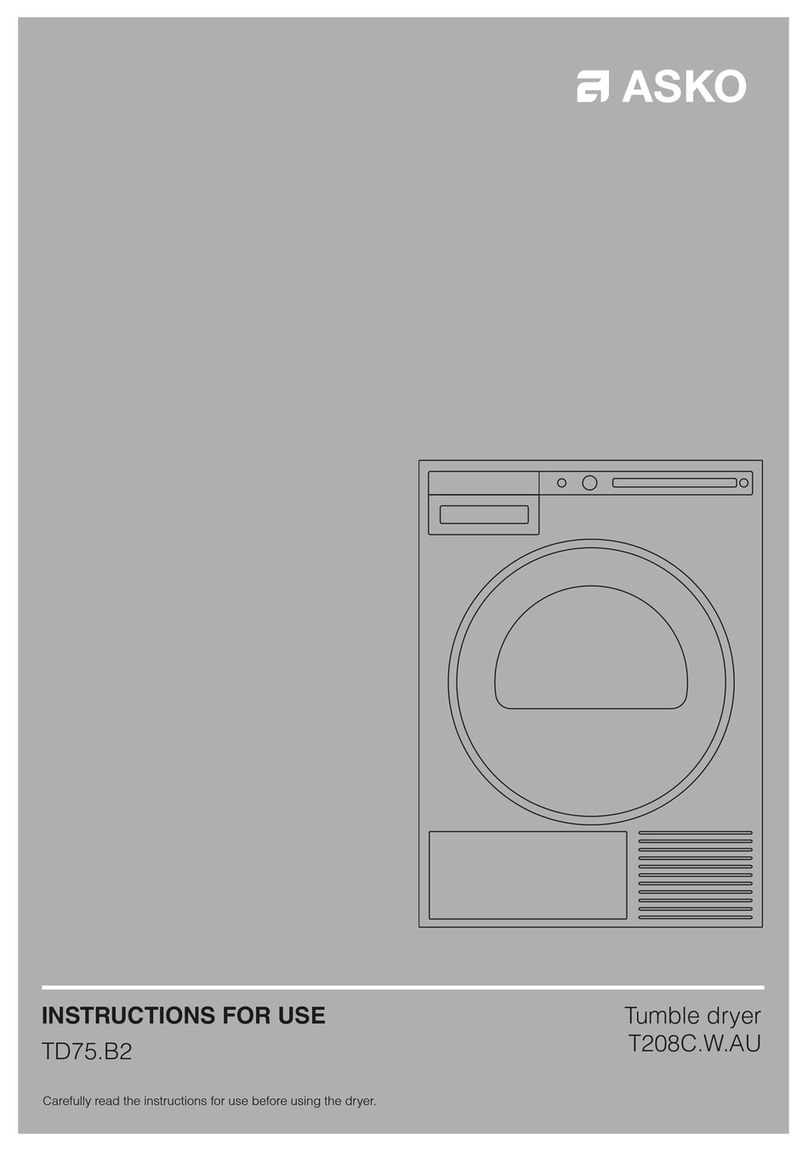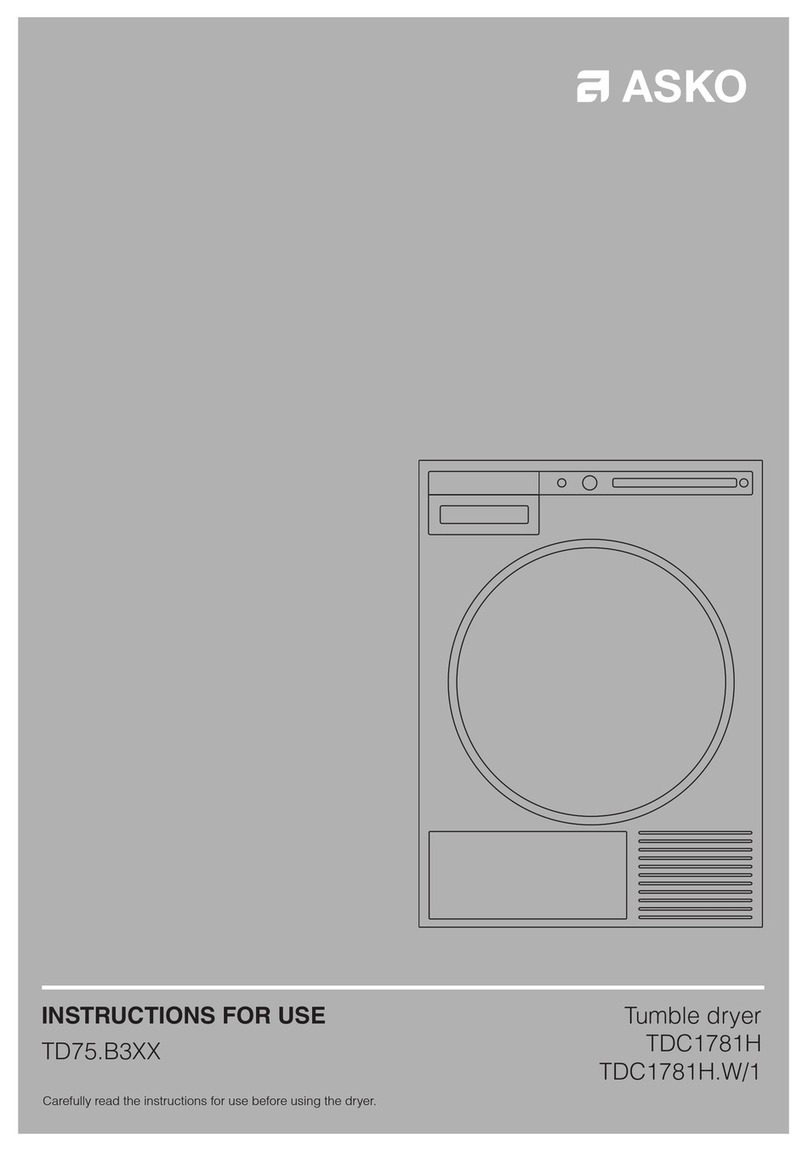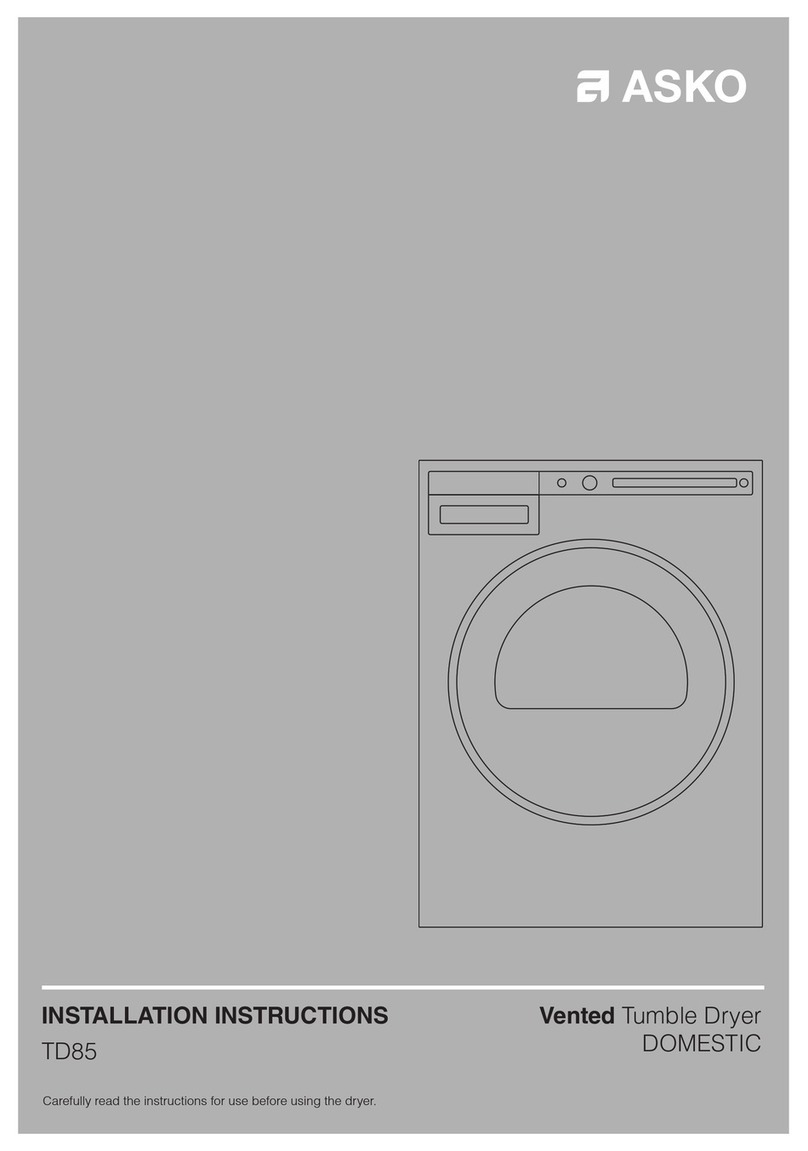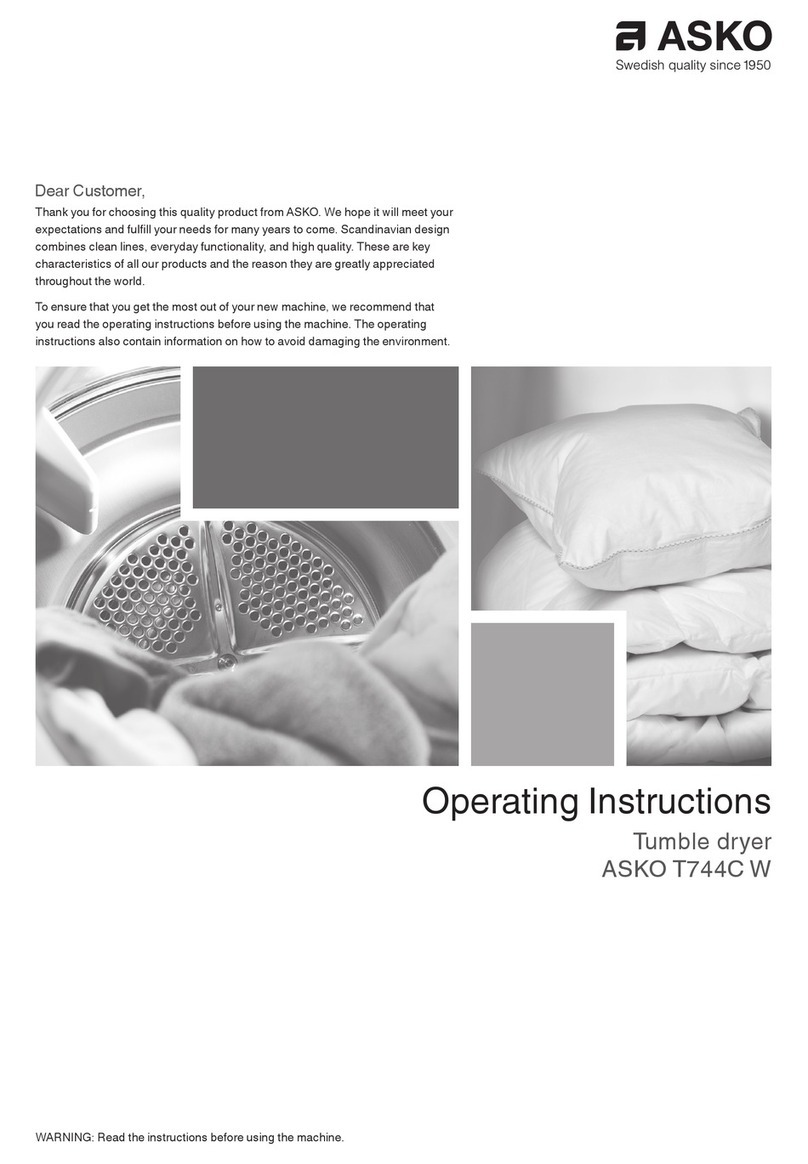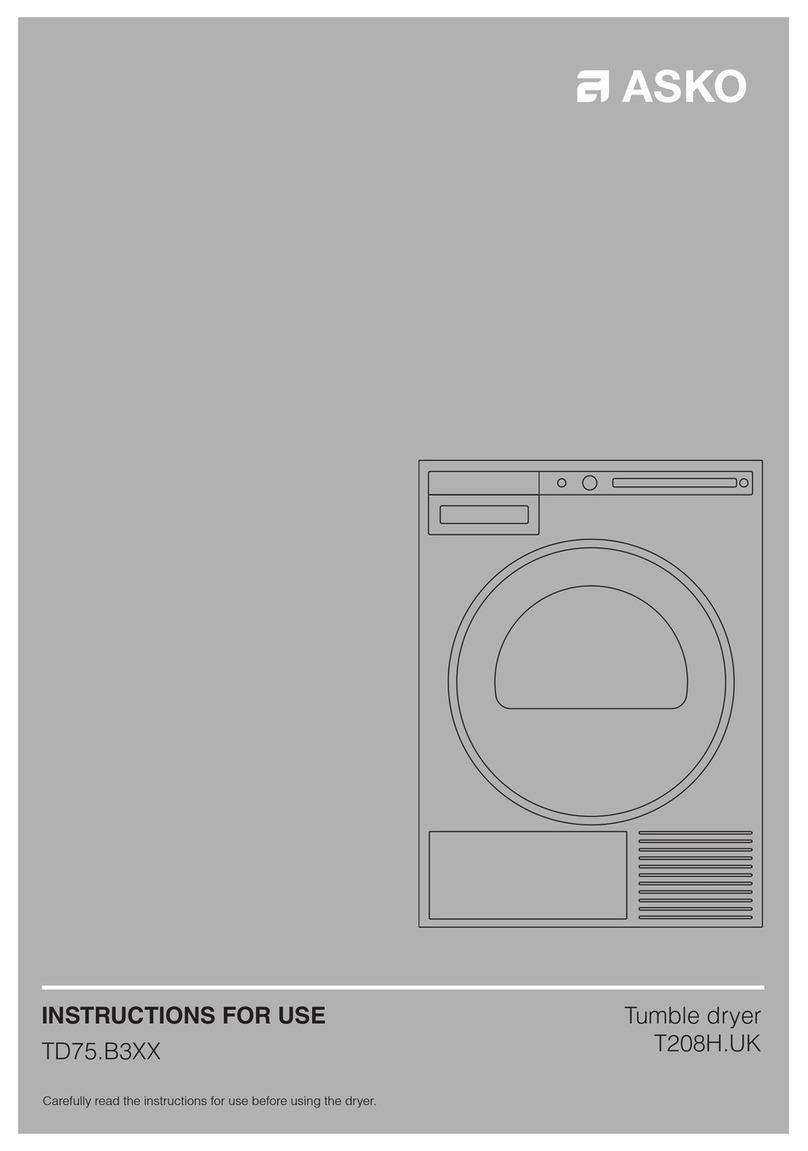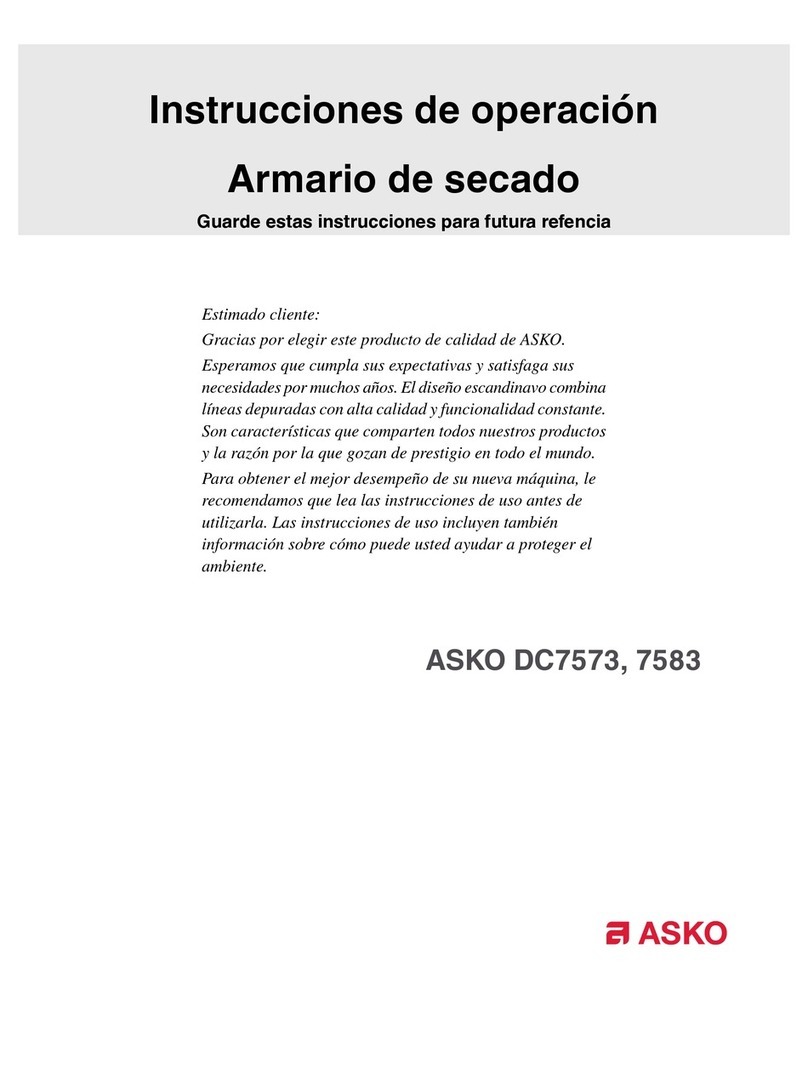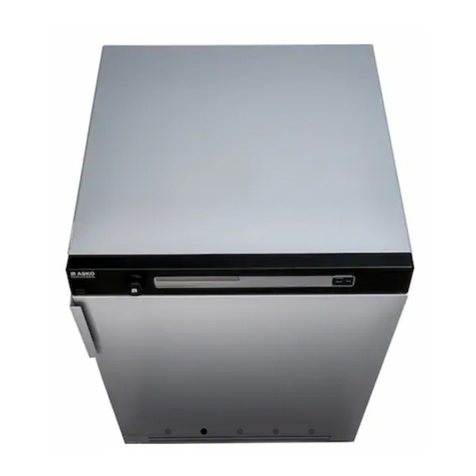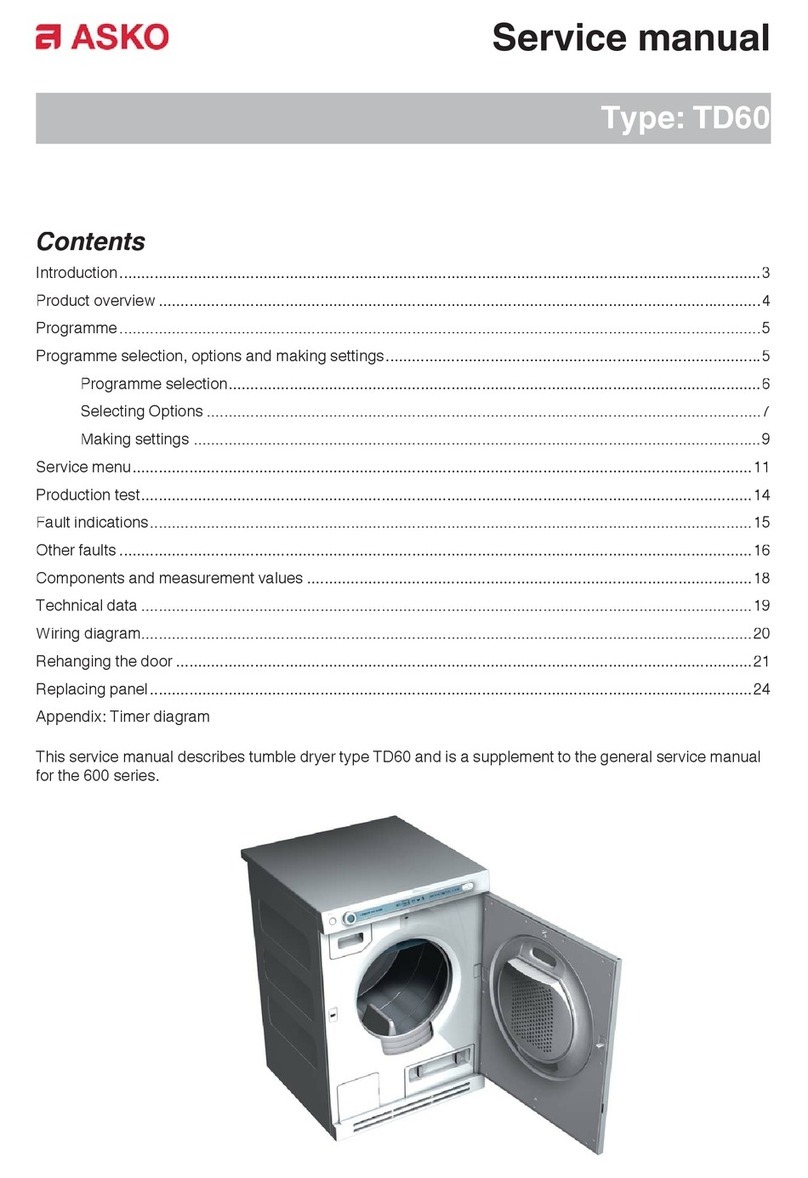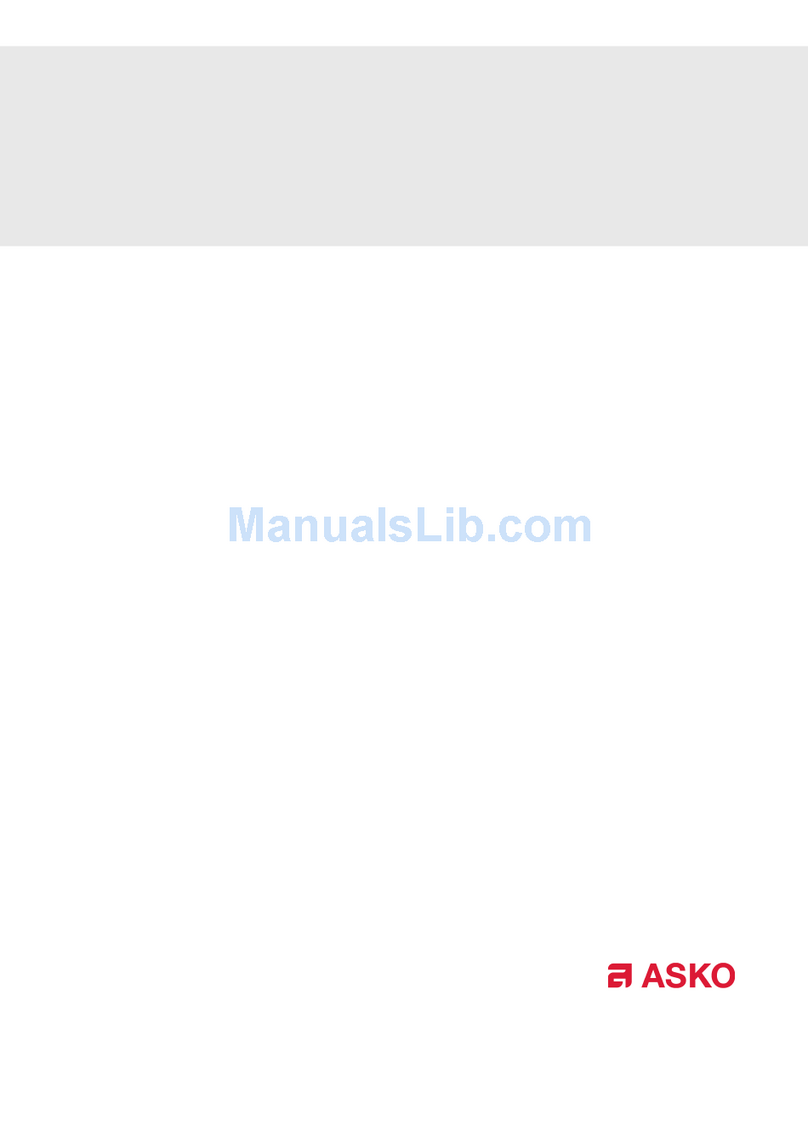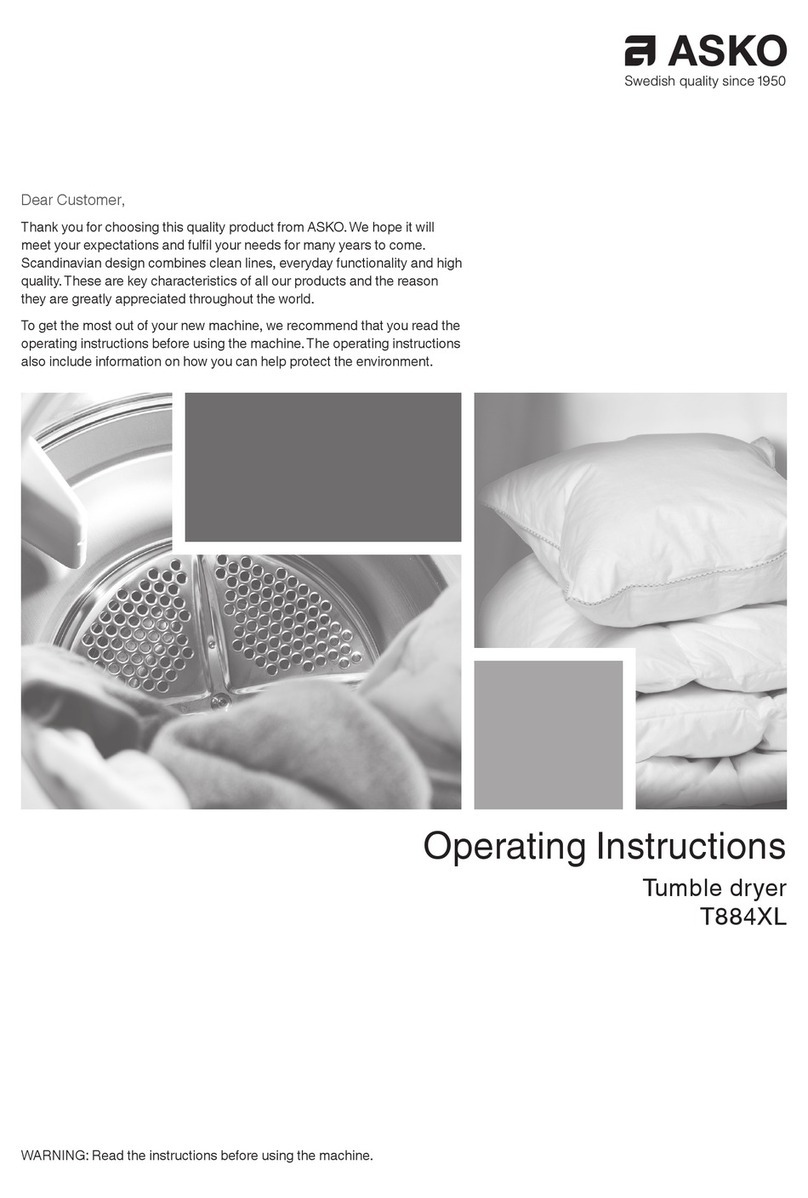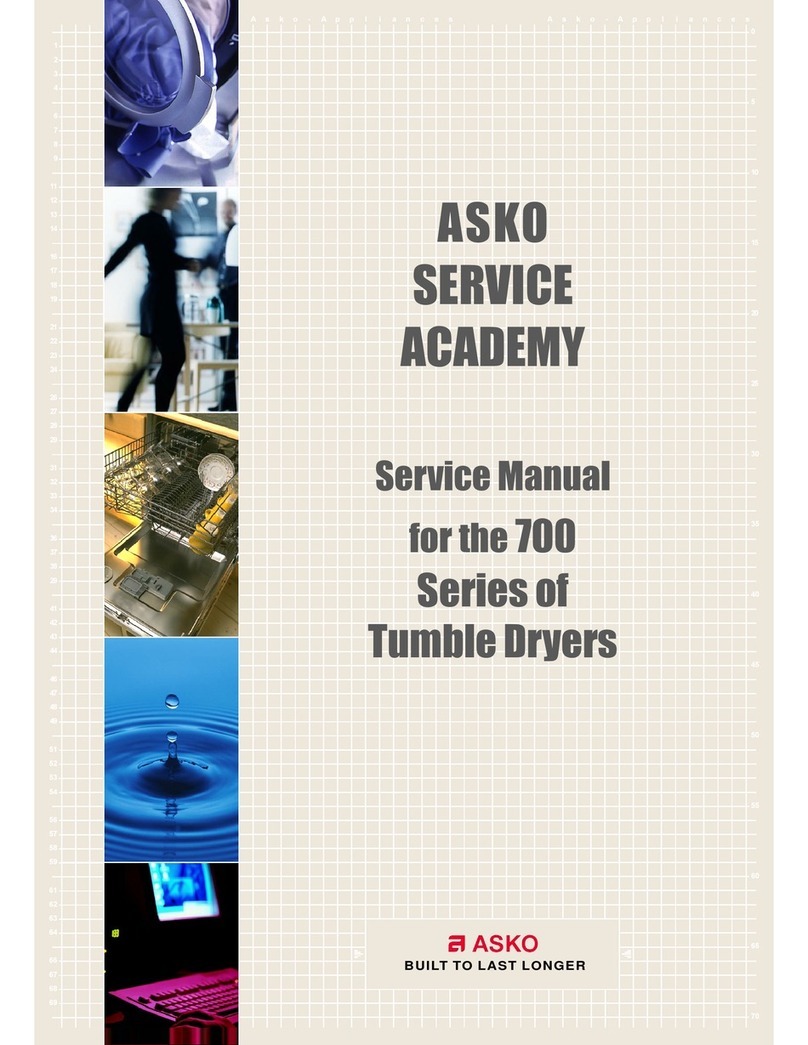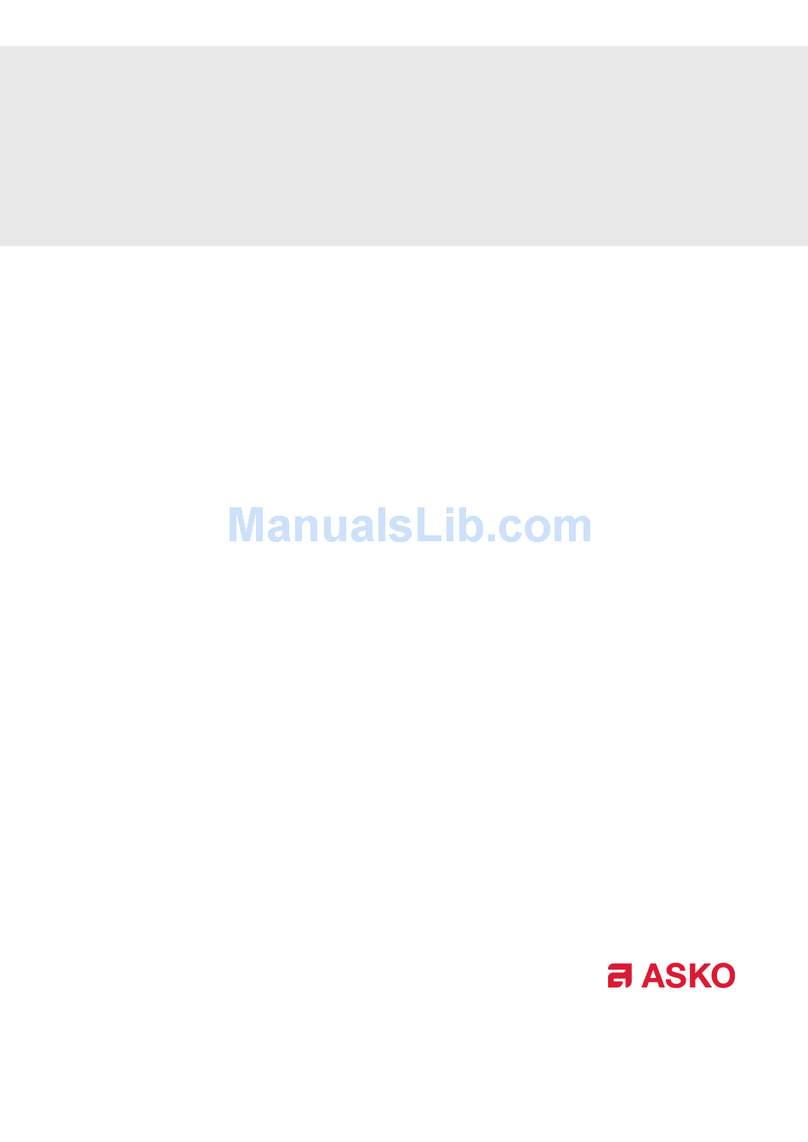10 Customer Care Center, 1-800-898-1879, www.askousa.com
ELECTRICAL INSTALLATION
The receptacle on the rear of the machine is
designed to accommodate ASKO washers ONLY
(rated 208–240 V.) To use this receptacle, you must
use the ready-fitted plug supplied with the washing
machine or an equivalent.
ASKO washers rated 208–240 V have two internal
fuses of 15 A each.
The machine should only be connected to a
grounded wall socket.
This appliance must be properly grounded.
Refer to the “Important Safety Instructions” for
grounding instructions.
The power supply cord must be grounded. If the
machine is to be used in a wet area, the supply must
be protected by a residual current device.
Connection to a permanently wired supply point
must be made only by a qualified electrician. As
supplied: Single-phase, 208–240 V, 60 Hz, 3000W
heater rating 15 A circuit required.
Do not connect the machine to the mains
electricity supply by an extension lead.
Remove cover to access terminal box.
(Requires a 20-Torx screwdriver.)
Electrical Connections
Read the Electrical requirements and grounding
instructions before connecting the tumble dryer.
Electric models of the dryer are manufactured for
a 3-wire connection system. The dryer frame is
grounded by a link to the neutral conductor on the
dryer terminal block. If local codes do not permit
grounding through the neutral, the grounding link
from the terminal block must be removed and a
separate ground wire must be used.
Only a 4-conductor cord shall be used when the
appliance is installed in a location where grounding
through the neutral conductor is prohibited.
Grounding through the neutral conductor is
prohibited for new branch-circuit installations,
mobile homes, recreational vehicles, and areas
where local codes prohibit grounding through the
neutral conductors. The grounding link on the dryer
must be removed for all 4-wire installations.
These Electrical Connection instructions provide for
installing the dryer in the following situations:
3-wire connection where local codes permit
grounding through the neutral. 3-wire connection
plus separate grounding connector where local
codes do not permit grounding through the neutral.
4-wire connection.
Each of the above connections can be made
with an approved power supply cord or by direct
wiring. Each connection instruction identifies
the appropriate Power Supply Cord and covers
requirements for direct wiring.
In Canada, the dryer is delivered ready-fitted
with a four-prong plug intended for connection to a
single-phase supply.
Connecting a 3-wire Power Cord
Before starting this procedure, be sure the
power is turned offat the breaker/fuse box.
Spade terminals
with upturned
ends
Ring
terminals
Ground
(center)
3/4" UL-listed
strain relief
Ground
This blade connects to
this conductor.
3-Wire Cord
Power Supply Cord
You will need a 3-wire power supply cord with
three No. 10 copper wires and a matching 3-wire
receptacle of NEMA Type 10-30R, as illustrated
below:
To connect a 3-wire power cord to the dryer, follow
the steps below.
The numbers in the illustration correlate to the
step numbers.
1. Turn the power offat the breaker or fuse box.
2. Remove terminal block cover.










